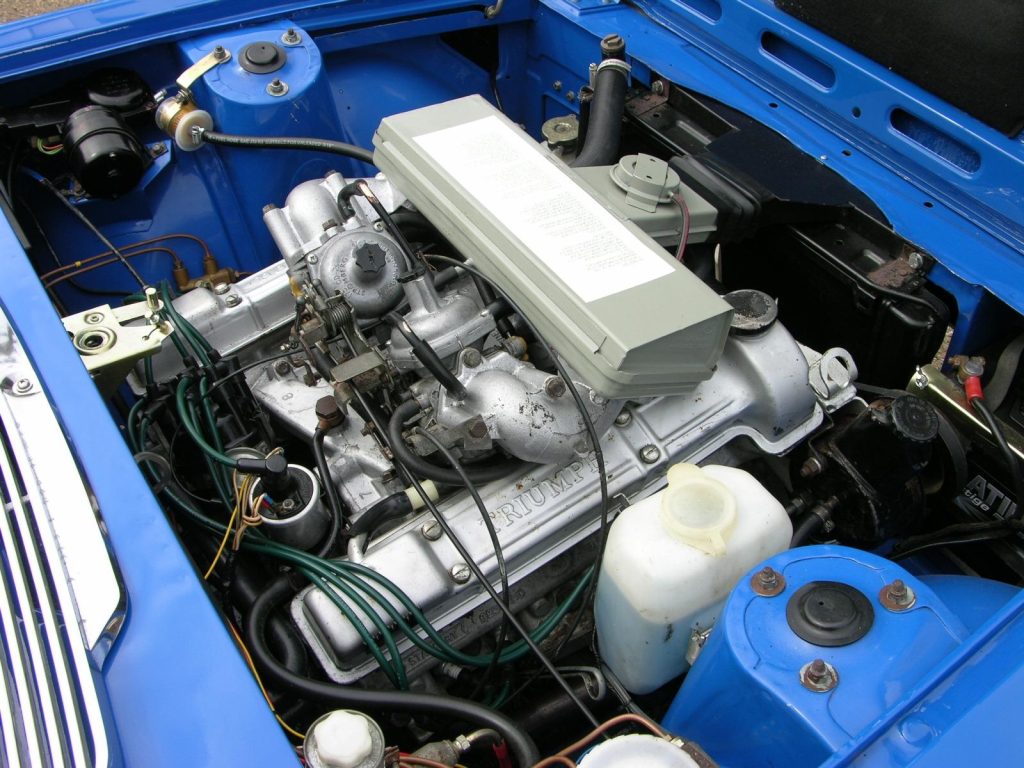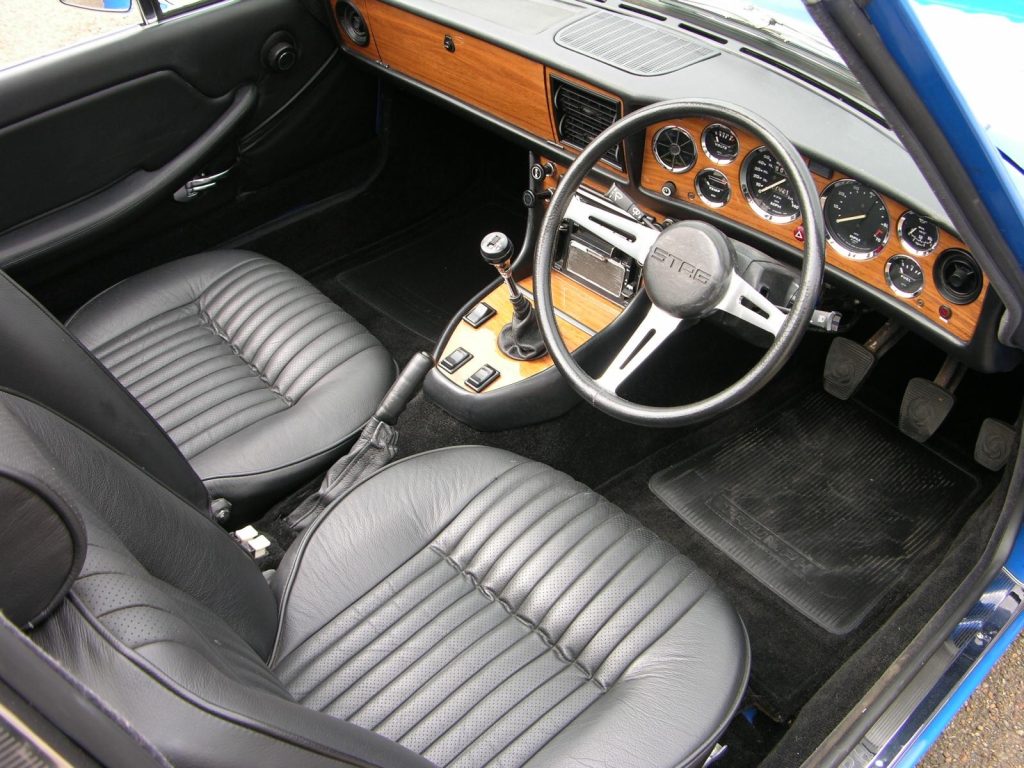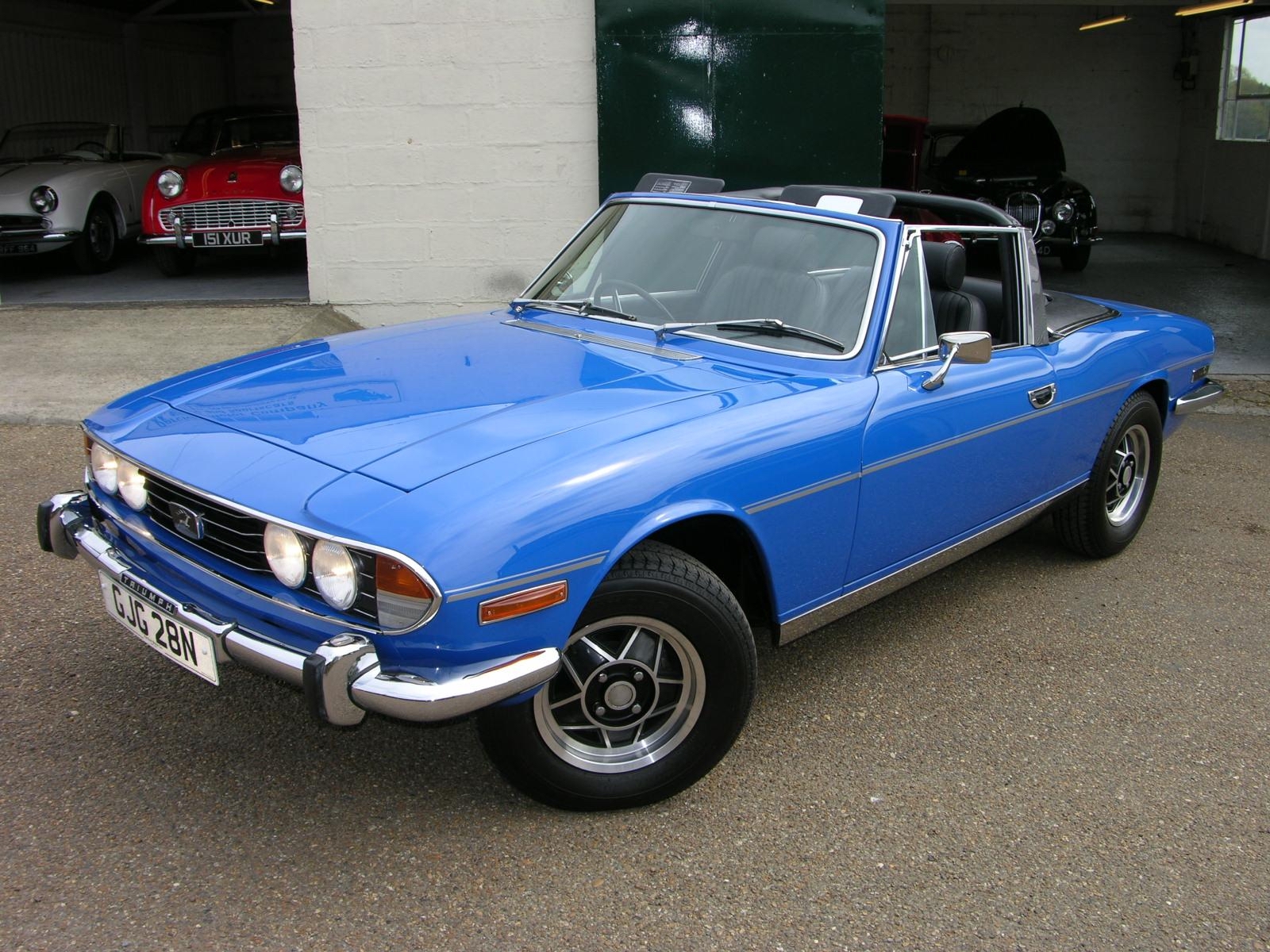Few (if any) machines better sum up the tragedy of the British car industry during the 1970s quite as succinctly as the Triumph Stag. This beautiful Italian-designed, open-topped GT, with its lusty V8 engine, had all the right elements for success, but poor execution and even worse post-sale care somehow managed to snatch tragedy from the jaws of Triumph.
We all know, today, this ambitious tourer didn’t suffer any fundamental design flaws, as proved by the reliability and usability afforded by modern fluids, materials and understanding, which somehow makes its near-miss status all the more painful. The good news is that at least it’s finally found an appreciative audience. However, even the most committed Stag fan might not have heard some of these lesser known tales, lurking in this often misunderstood machine’s past…

Le Mans support Triumph 2000
The oft-repeated tale of Giovanni Michelotti’s request to Harry Webster for a ‘spare’ Triumph 2000 – a model he’d previously penned for the Canley firm – is part of Stag lore, but the prior history of the particular car Webster sent him isn’t…
Michelotti had a unique relationship with Triumph and Webster, having forged a friendship with the latter when he was chief stylist at Vignale. This special relationship was made clear by Webster’s approval of his friend’s request for a 2000 with which he could create a design mule to showcase his talents at the 1966 Geneva Motor Show. Triumph’s first-refusal of the end result is a part of Stag lore, but the prior history of the particular car Webster isn’t…
This 1964 saloon had seen substantial service at the Canley works before it was seconded to the race team, where it performed support duties for the Le Mans campaigning Spitfires in 1965. Incidentally, two of the four Spitfires entered in this famous endurance clash – which saw Ford and Ferrari infamously tussle for top honours – went on to finish first and second in class (1150cc).
Three Stag Fastbacks
Considering that its prototype emerged from a saloon, it’s perhaps not overly surprising to learn that Triumph decided to give a coupe version of the Stag a try.

Just three prototypes were produced, with only one thought to have survived the crusher. Of the three pre-production Stags two were apparently sent to Michelotti for the designer and his team to craft new rear ends. There was also an in-house attempt at the same, which was kitted out with full running gear for mechanical assessment – it’s thought the one car which survives is this latter Canley-created custom coupe.
The running cars ended up looking surprisingly ungainly and whether it was down to the unorthodox looks, or its potential to challenge the Jaguar XJ-S, either way, British Leyland had pulled the plug on the Stag Coupe project by September 1970. Ordered to destroy the prototypes, Canley apparently obliged for two of the three, but the engineering department allegedly retained one, which was subsequently finished and road registered, before being used by a BL director.
The car then disappeared, and was thought to have been lost, before it was rediscovered in 1985. Restored to its former glory, this surviving Stag coupe was publicly displayed for the first time on the Stag Owners’ Club stand at the NEC Classic Motor Show in 1989. When we last saw it, the sole surviving Stag Coupe was sold by Bonhams for £53,475 at its Goodwood Members’ Meet sale in April 2023.
Disastrous US reception
Considering its key ingredients and obvious built-in appeal to American consumers, it was essential that reception to the Stag, over there, was positive; unfortunately for Triumph and BL, it very much went the other way…

Deliberately designed to hook US drivers, with Triumph’s excellent straight-six engine swapped for the new and comparatively complex aluminium in-house V8, other less obvious little details like US-demanded side markers were also neatly incorporated into the front wing design; clearly showing the Stag’s intended direction of travel.
Things started with promise in 1970 with press and public opinion alike recognising many of the Stag’s great qualities. However, its increasingly high price and warranty claims soon started eroding that good will. BL’s poor quality control and lack of knowledgable after sales support really sealed the Stag’s fate. Word of mouth regarding the car’s reliability (or lack thereof) soon saw many well heeled potential Stag customers looking elsewhere.
Triumph/BL marketing predicted annual sales of around 12,000, however, the Stag struggled to double that figure even by the end of its seven-year production. Things were so bad in the USA – certainly not helped by an oil crisis – that the car was pulled from sale after just three years. Although all the above were clearly contributing factors, new emission and safety legislation for 1975 finally and rudely awakened BL and Triumph from their American dream.
Ferguson Formula 4x4s
A number of Triumphs in the early- to mid-1970s – and other family cars from a broad spectrum of manufacturers – were given the four-wheel drive treatment via FF Developments; a car-converting offshoot of Ferguson Formula. Tony Rolt’s company had apparently obtained a licence from Ferguson Formula to convert customer cars to FF specification. Among the cars gifted greater traction, via an extra driven axle, were a pair of Stags.

One manual and one automatic transmission variant were allegedly converted with both cars benefitting from an automatic locking differential, via a viscous coupling, and Dunlop Maxaret mechanical ABS braking – shared with the pioneering Jensen Interceptor FF. The adoption of an additional driven axle up front necessitated a prominent bonnet bulge, as the engine had to be raised to make room for the amended front axle.
Allegedly, one further four-wheel drive Stag was converted by Triumph itself for assessment. The project wasn’t green lit and the only prototype is thought to have been converted back to a standard rear-wheel drive road car. It’s thought that both FF Developments converted Stags still survive today.
Were you around when the Triumph Stag first hit the roads, or have you ever driven one? We’d love to hear from you in the comments below.
Classic car insurance from Hagerty
Get trusted classic car insurance from the people who understand classic cars. We’re proud to be rated ‘Excellent’ on TrustPilot.









I bought my triumph stag 32 years ago and still own and drive it. It’s in beautiful condition and probably gets more attention than it ever did. This year strangly I’ve experienced positive responses from far younger people than preciously experienced they’re just a genuinely lovely car to cruise around in stylish design certainly not quick
I’ve also owned my series 1 E type tweaked for 25 years which is an entirely different beast and utterly beautiful from every point of view
I would never sell the Stag. I bought the same week my daughter was born and it’s in my will to be left her
I had a midnight blue one (KYL41K) in the late 1970s. Got teased a lot – mates called it a Triumph Snag’. It only let me down once – steam coming out of the engine etc, but it turned out to be a corroded core plug and cost a few pence to repair. Not particularly fast, but something charismatic about it. I loved that car, and sold it for more than I paid for it!
Must have been around Christmas 1971 …. Always in the Christmas “week” we had a house party… About 20 people use to come … Immediate family and close friends…. Sherry trifles Party six beer … mild and bitter ….. snowballs …. baby cham … pineapple and cheese on sticks ….never forget one of my moms friends…. very elegant woman she was ….. come on , her husband said we need to go to an outdoor., show me .So out we went. We lived on a busy bus route road and in them days street lighting, well , wasn’t that good. I’ve had to park my NEW car a few yards away (as a lot of people came in cars)They were all responsible drivers , only the wives”had a few” .There , SHE was …. a mamosa yellow car . Got in, the wooden dash lit up like a aeroplane cockpit… he fired HER up …. What car is this … I said with amazement…. It’s my BRAND NEW STAAAAAAG . Even in them early days of production, people made the “A”s last for ever .The sound of that old V8 burble was something that I had never heard of before. I’m sure this encounter was setting me up for life.After a few of life’s mishaps, I ended up working and been there on the last shift at THE AUSTIN at Longbridge . From that day … I want one , then about 45 years later have one … Sapphire Blue, the Old Girl is , of a 1973 vintage. Like any Old Girl, SHE moans and groans occasionally, but a little sweet talk and SHE eventually comes round
The V8 in the Stag is complex, but it’s not aluminum. It has a cast iron block with aluminum heads.